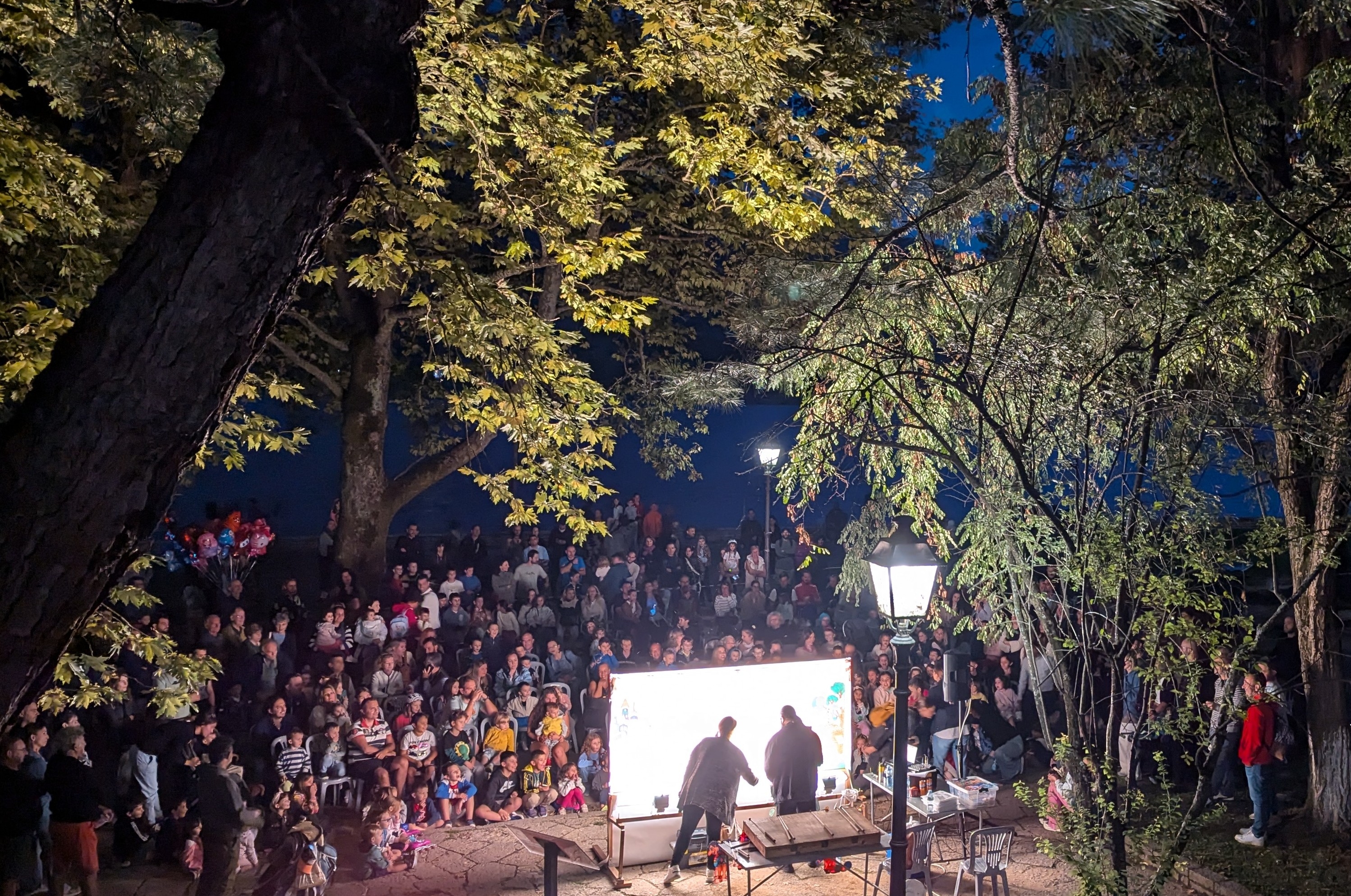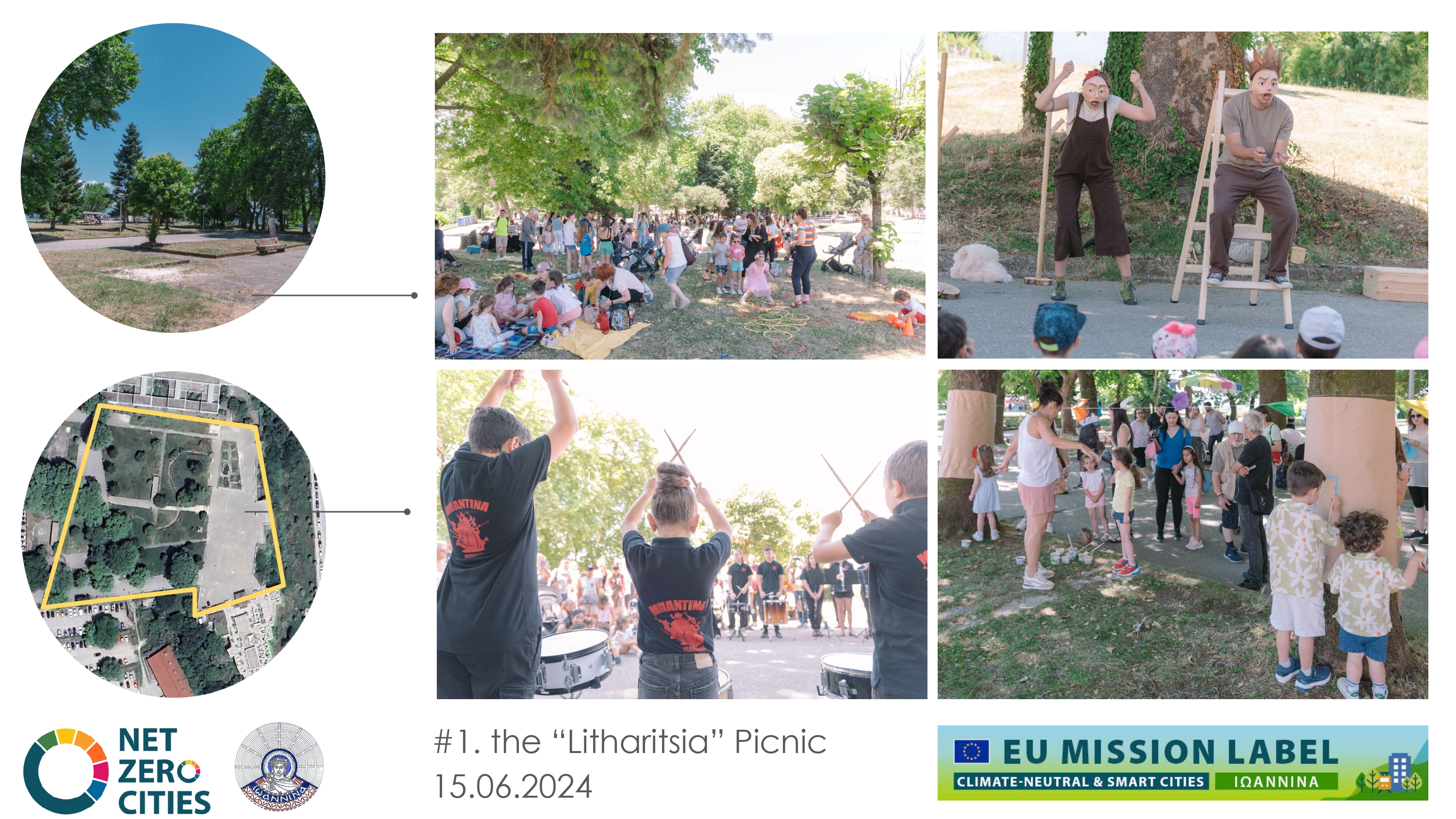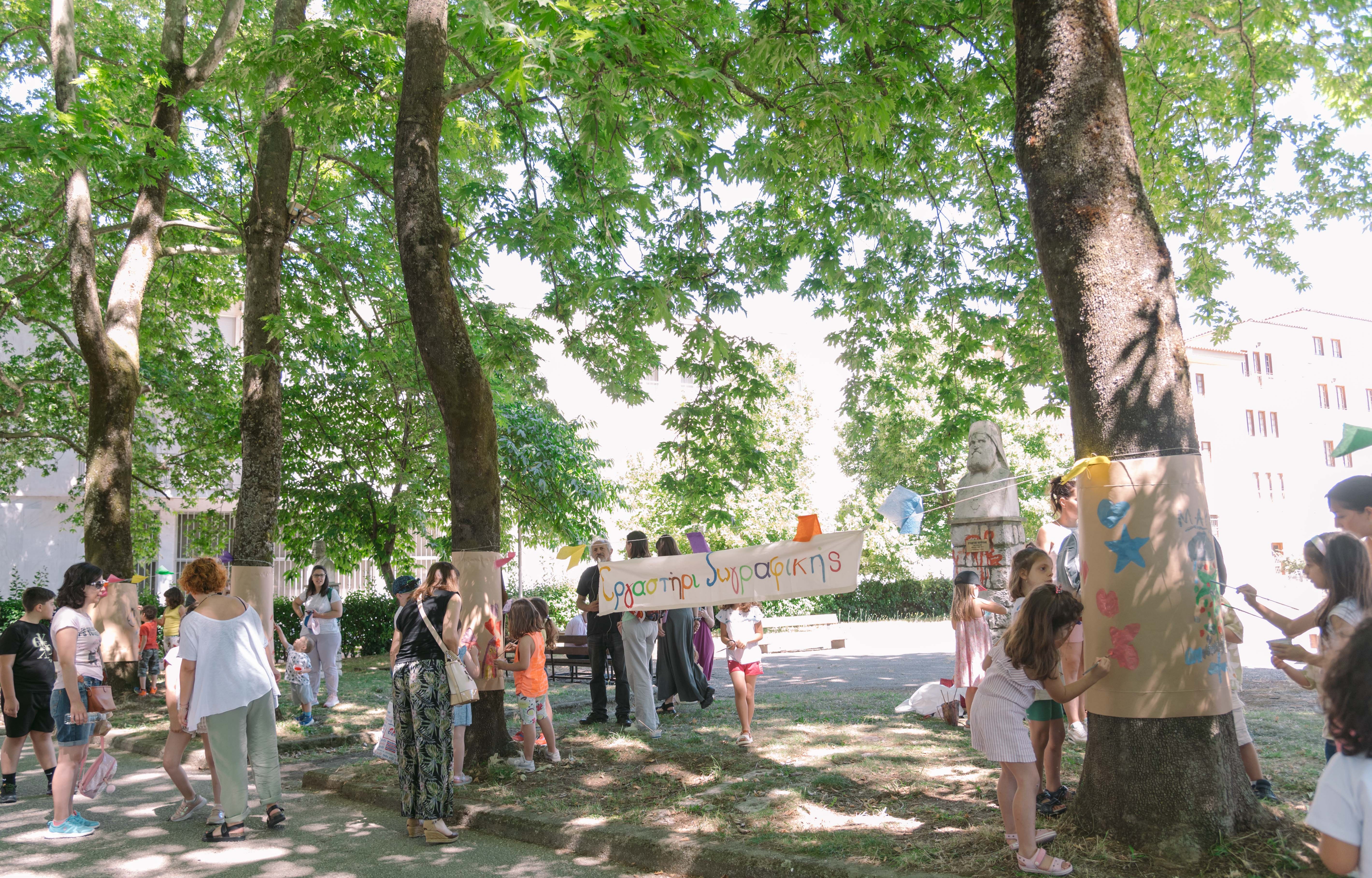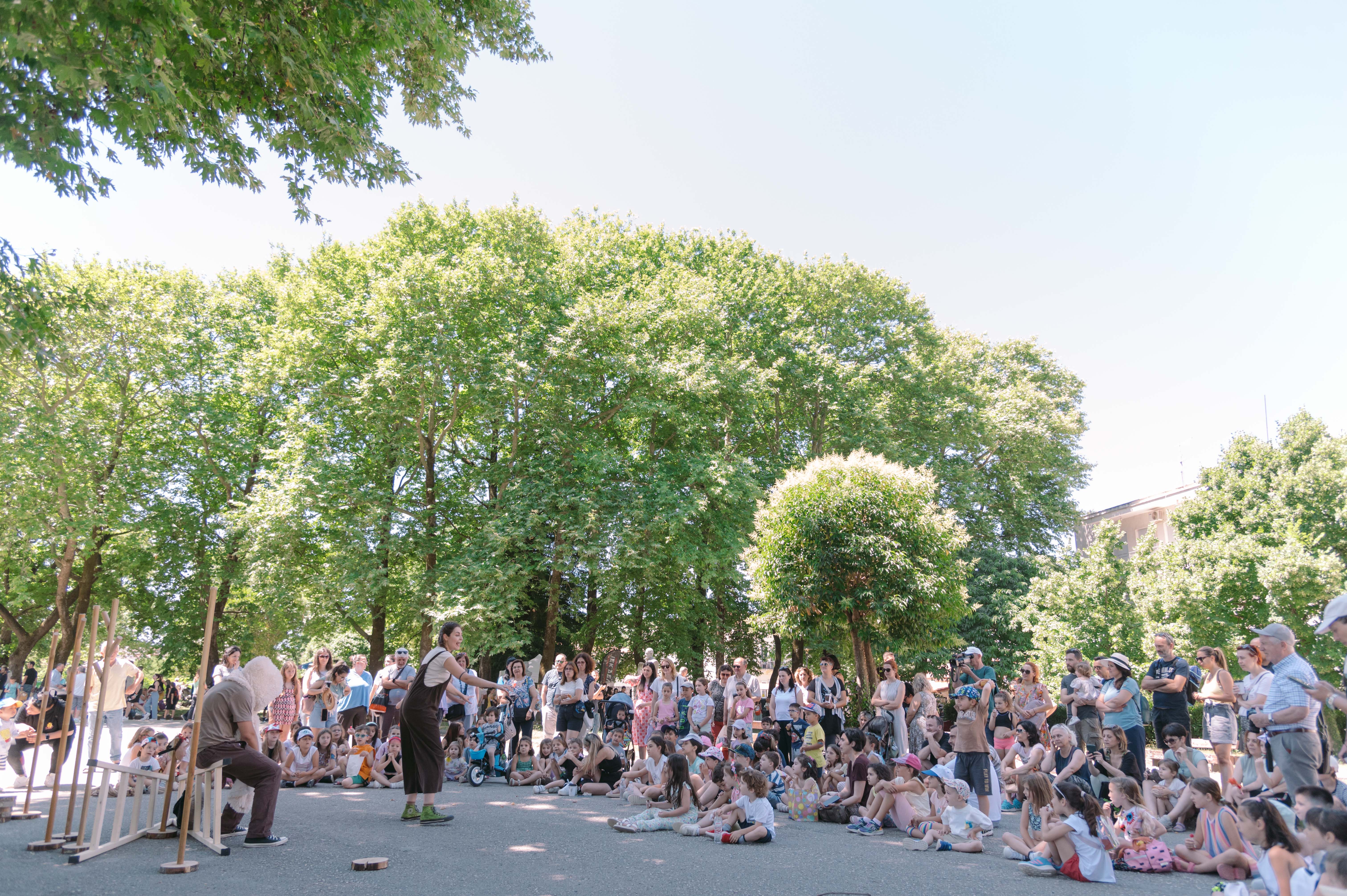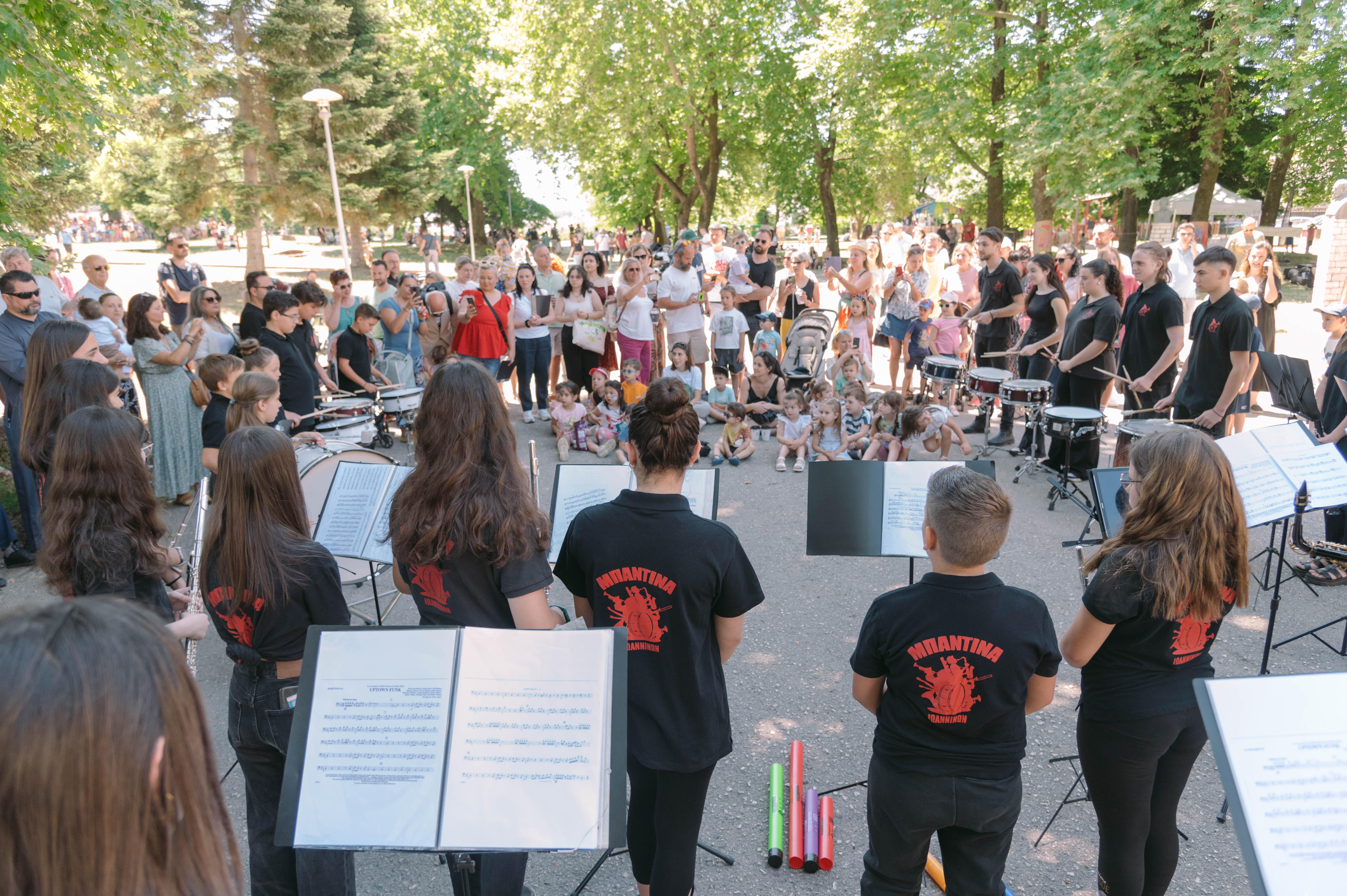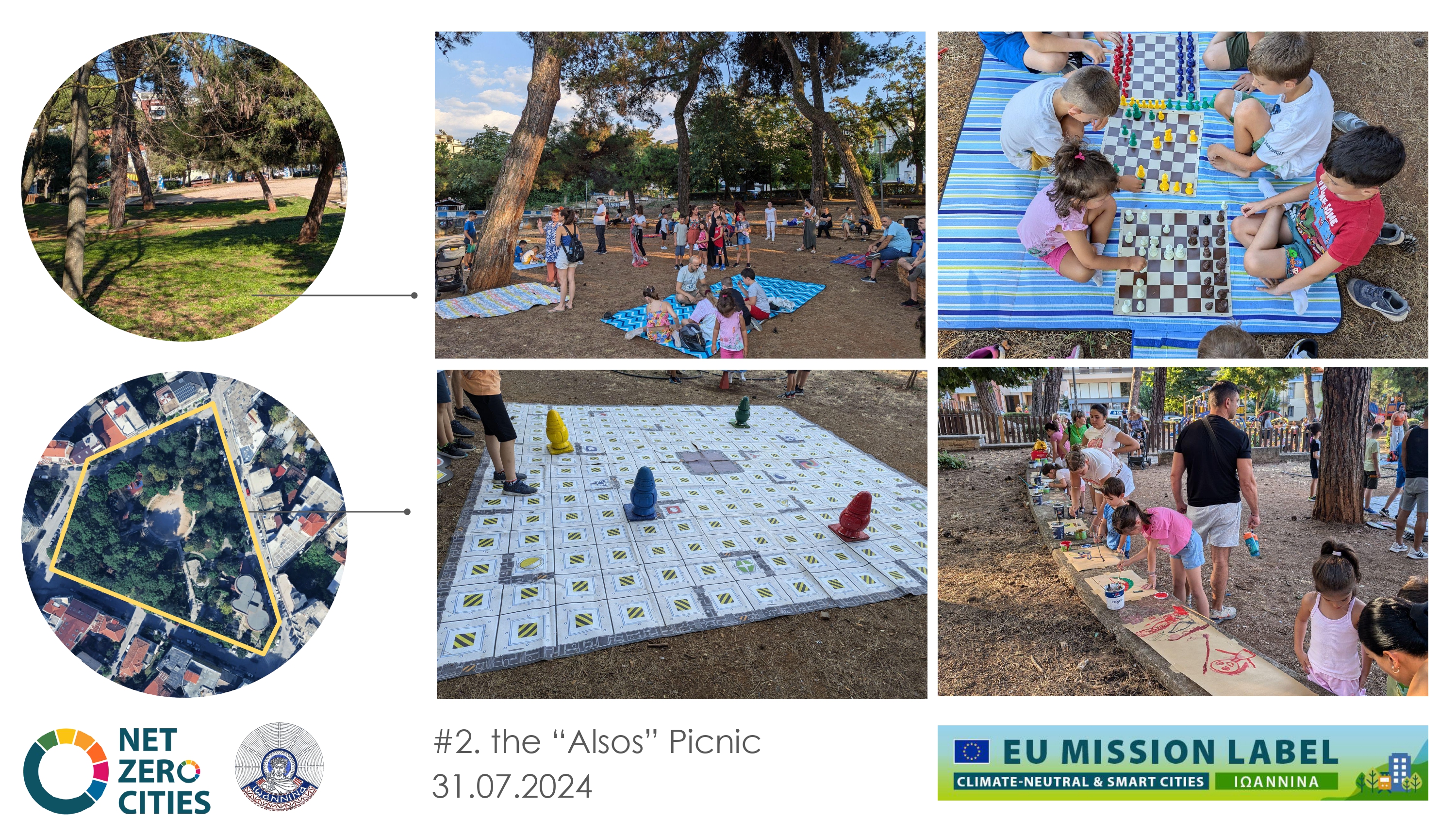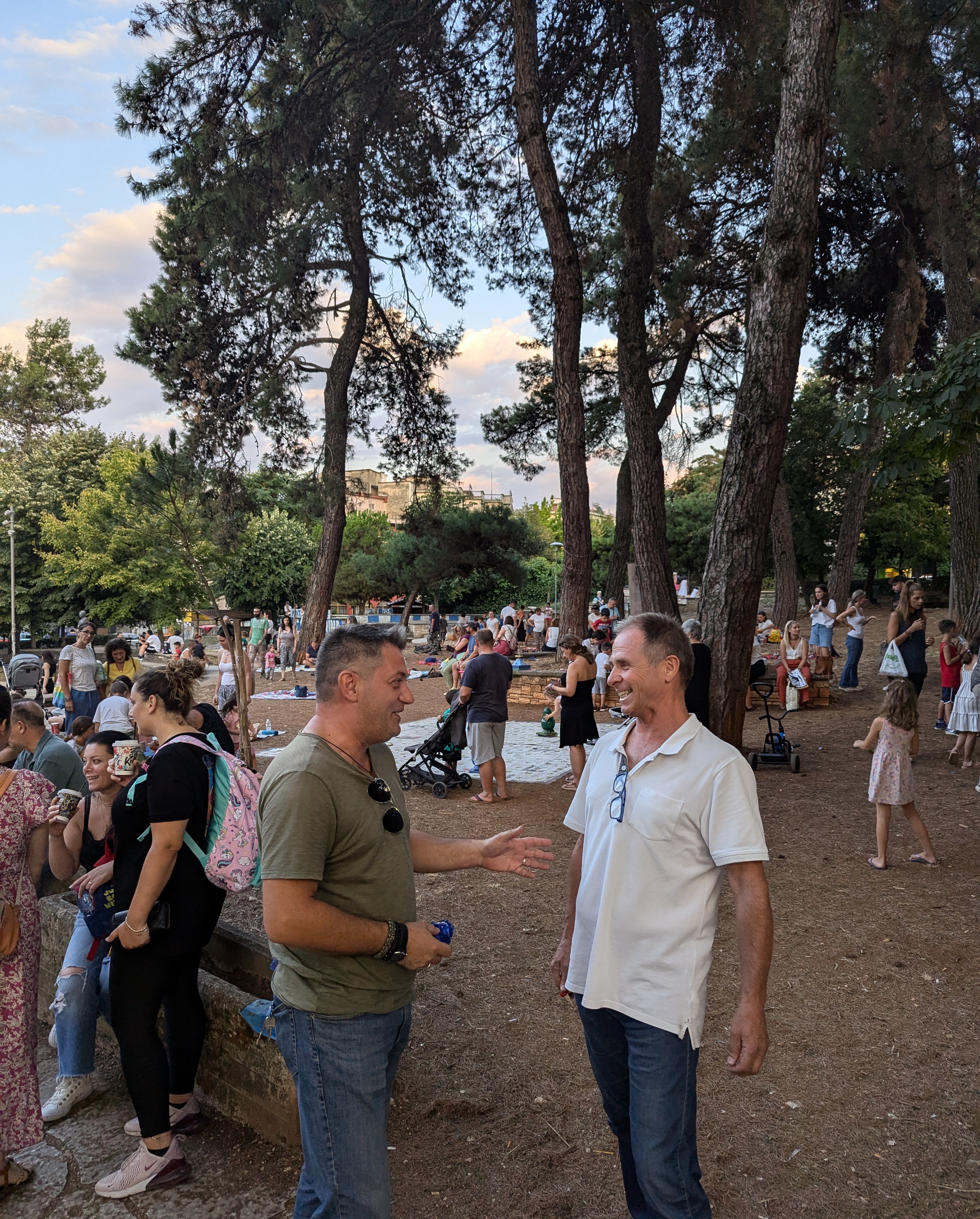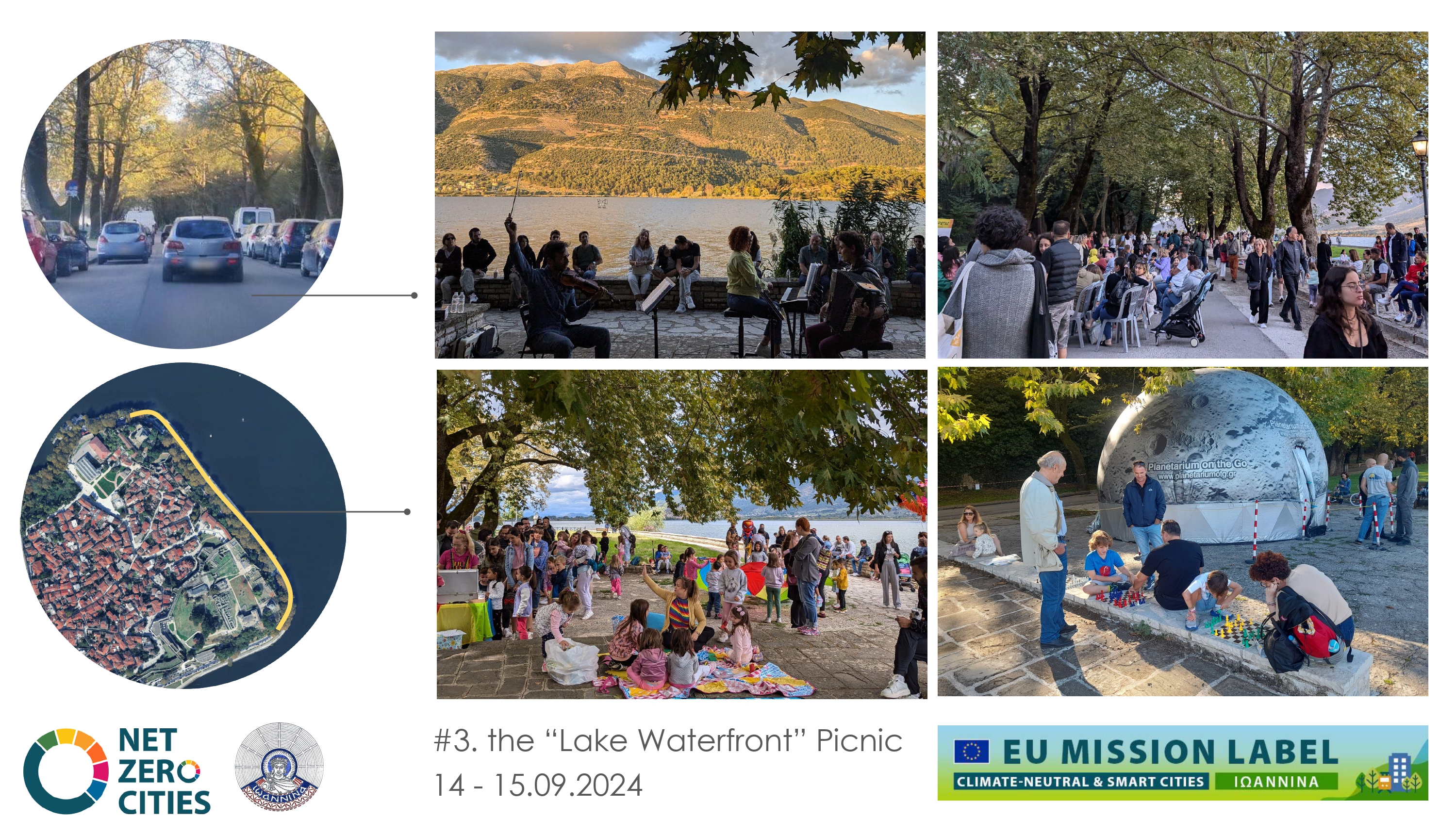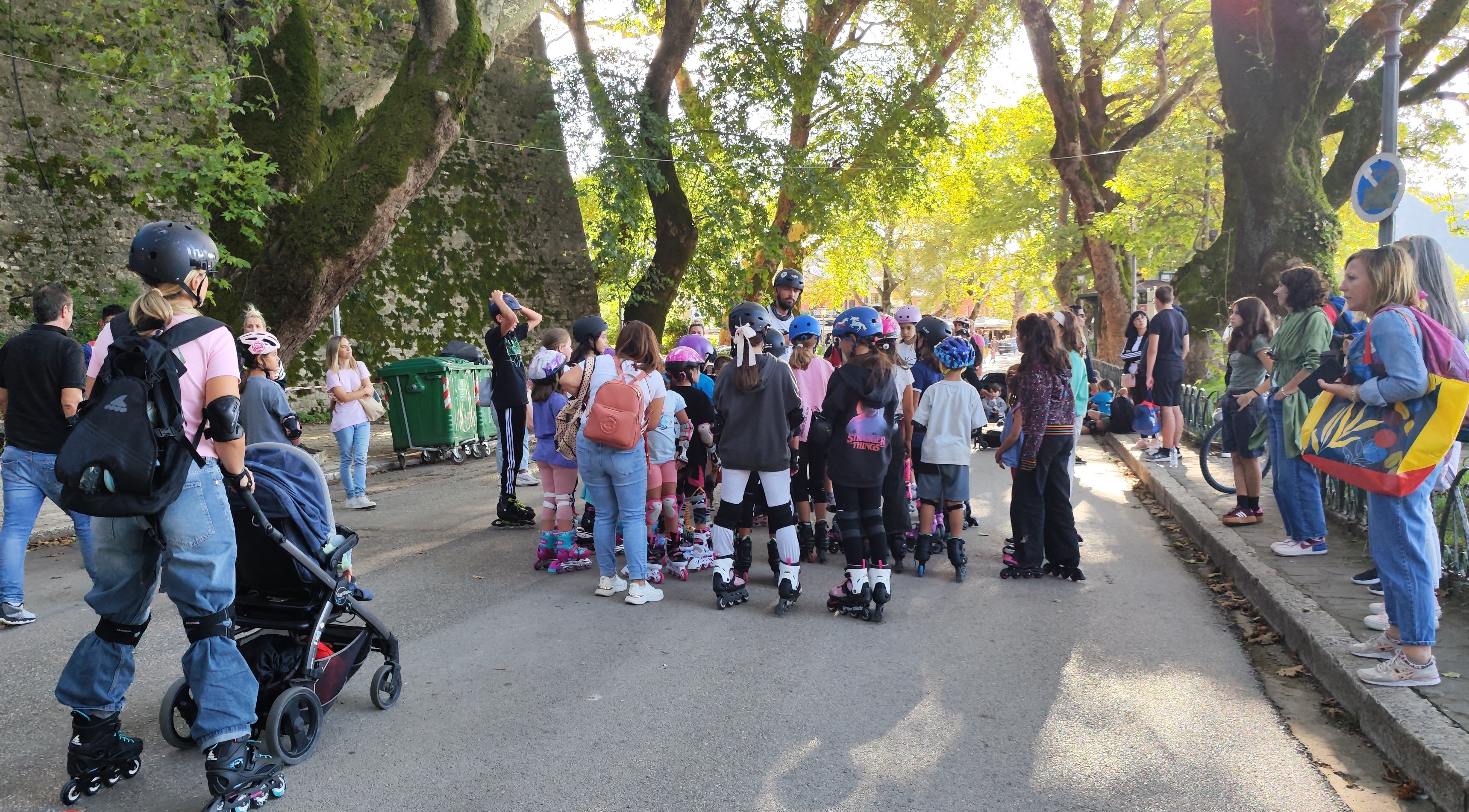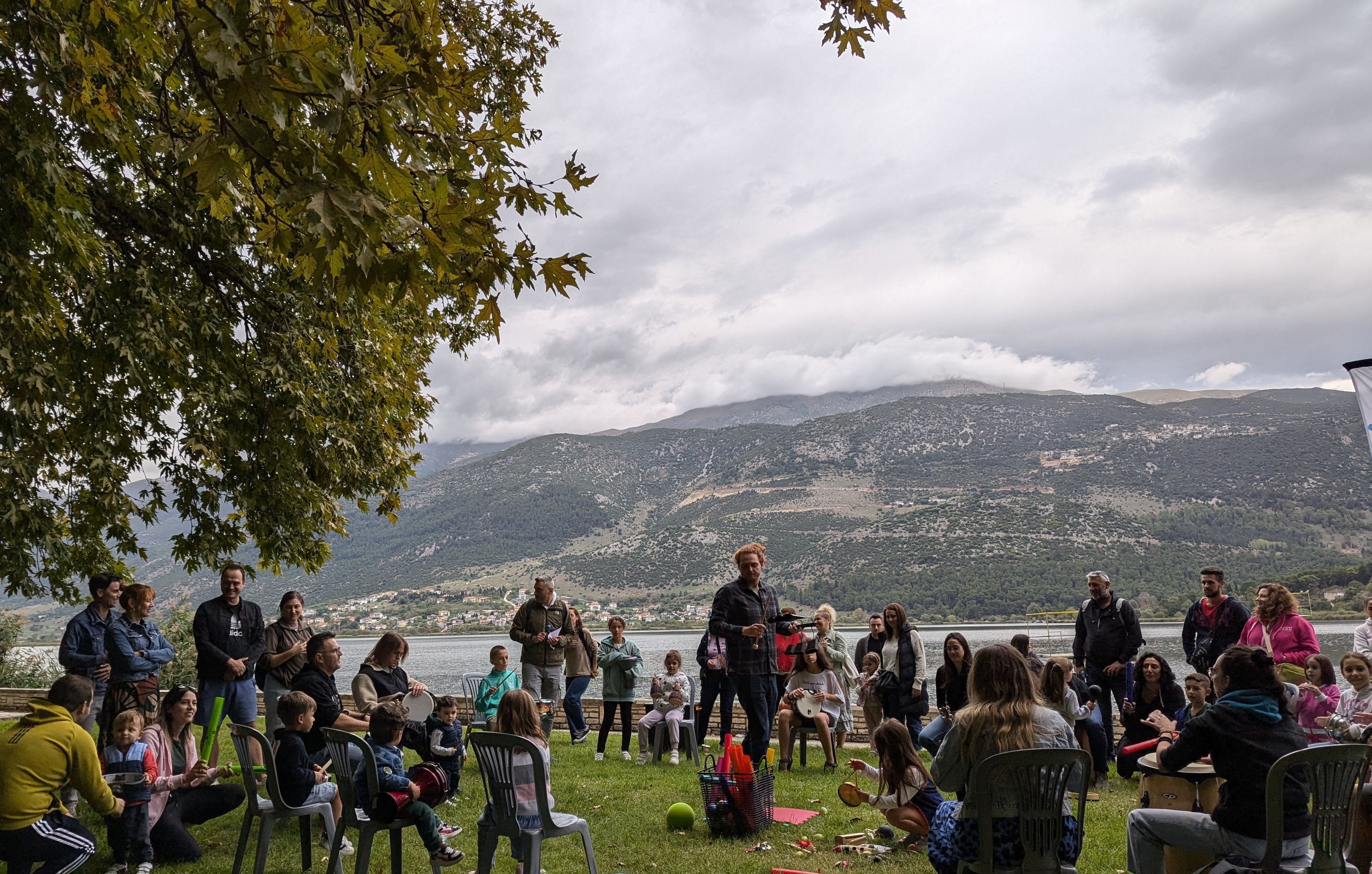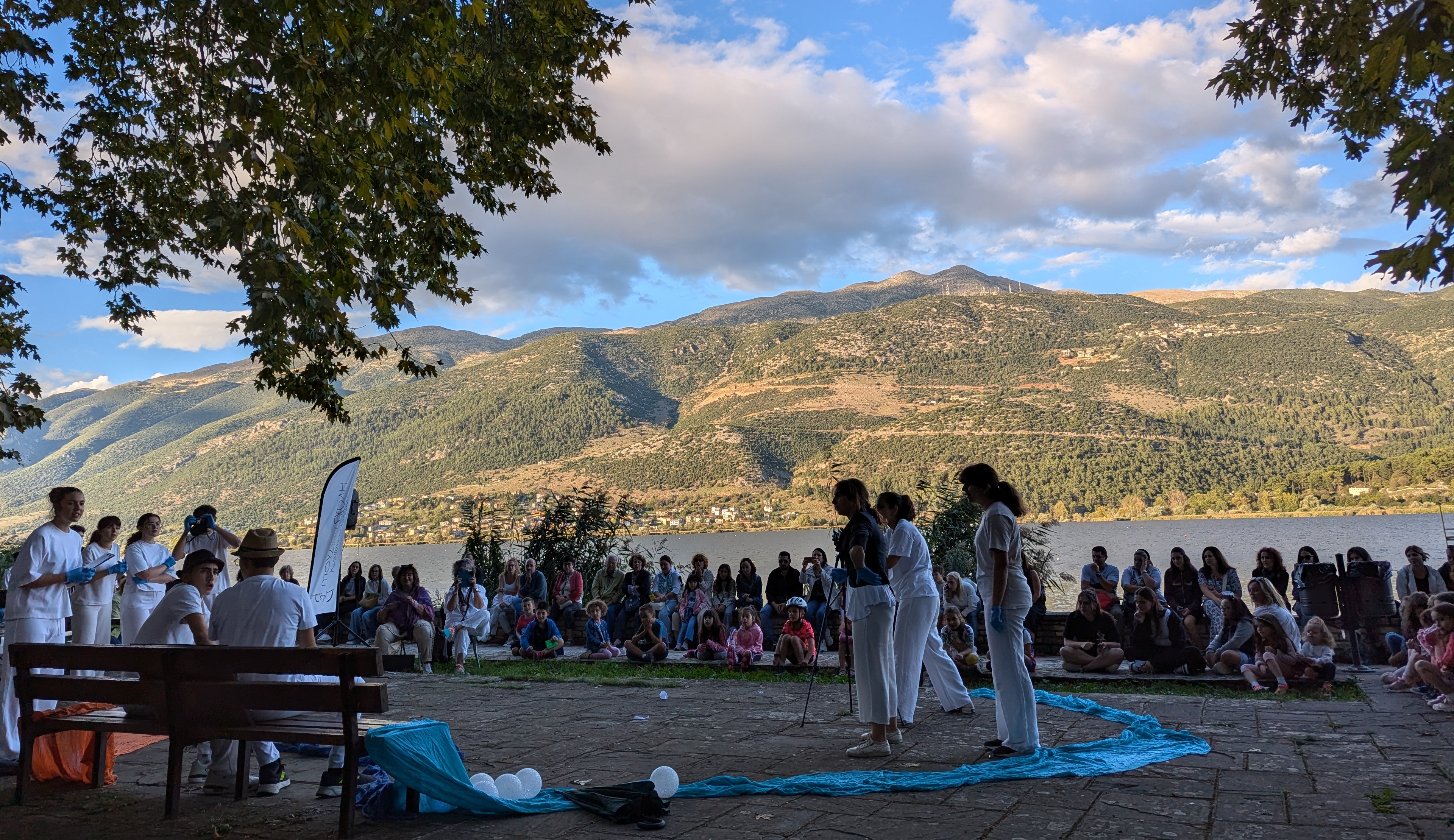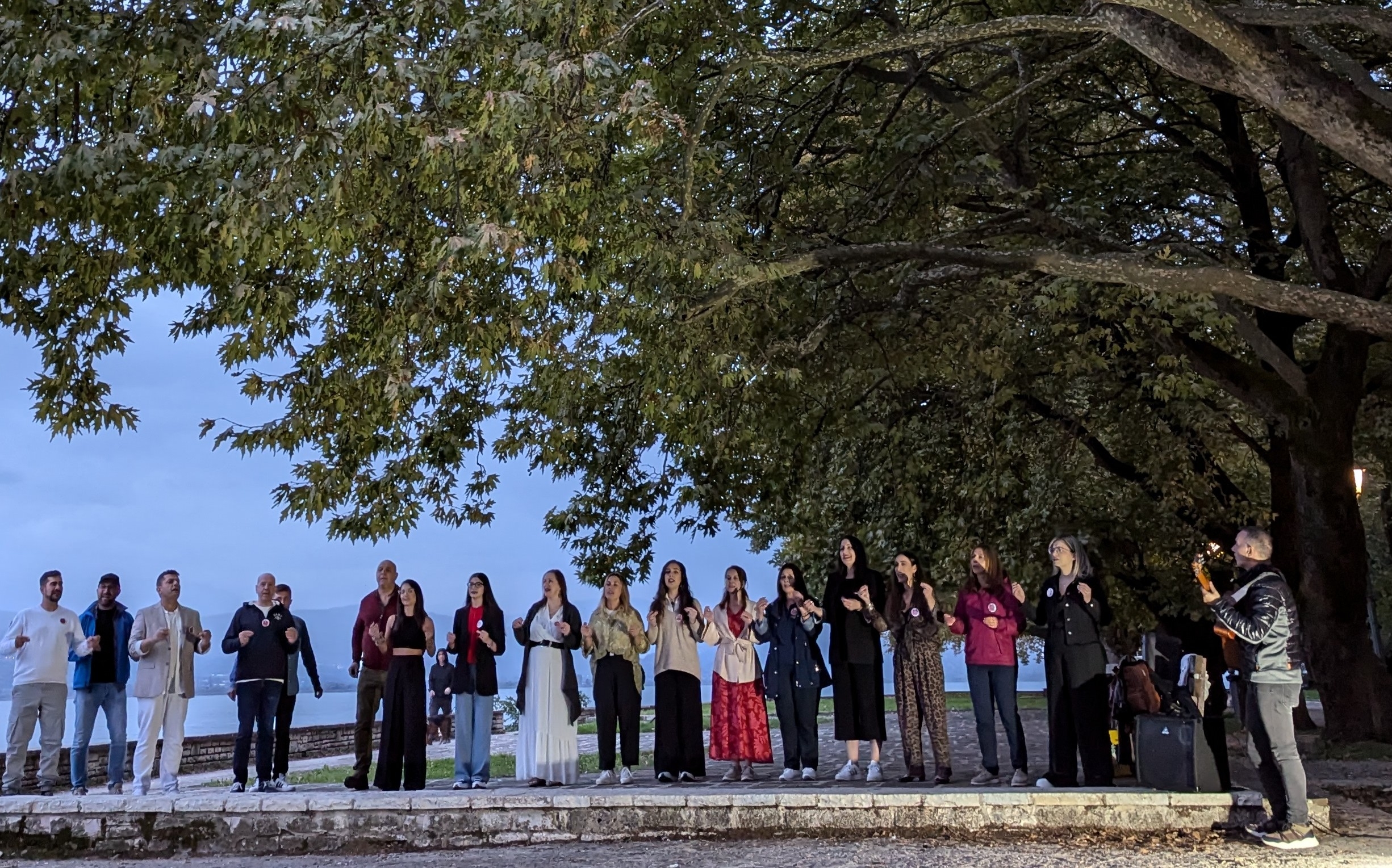Reconnecting with nature
The Picnics mechanism to regain parks
Implementation of a strategy to revitalize green public spaces engaging the local creative community
The Municipality of Ioannina has organised a series of culturally enriched “Picnics” in order to revitalise green urban areas that were once landmarks but have been abandoned in recent years in terms of collective use. Designed as a nature-based experience, in collaboration with local artists and neighbourhood committees, the project has succeeded in reactivating a sense of belonging to the natural context, as a mechanism for raising environmental awareness and stimulating local citizenship.
Greece
Local
Ioannina
Mainly urban
It refers to other types of transformations (soft investment)
Yes
2024-09-15
No
No
No
As a representative of an organisation
The city of Ioannina is located in a mountainous area of Greece, next to Lake Pamvotis, and has a population of 113,978. In 2024, the Municipality of Ioannina successfully obtained the European Mission Label for "Climate Neutral and Smart Cities" (Net Zero Cities), so all current city strategies and ongoing projects have been redesigned to support this goal.
Public green spaces carry a long collective memory through the centuries, and for past generations they had become a valuable resource for well-being. In recent years, local society has adopted a more consumerist approach to outdoor activities and socialising, using and identifying privately supported facilities as places for recreation. This phenomenon has gradually led to the physical abandonment of parks and the undervaluing of their climatic and social benefits to the urban environment. As a result, when it comes to public discussion or decision-making, parks are seen as vacant urban spaces that residents have no interest in connecting with or protecting.
To address this challenge, the Municipality of Ioannina developed a Soft Measures Strategy for 2024 with the aim of strengthening residents' relationship with the green context of their neighbourhoods and creating a framework for the local community to rediscover the identity of these places, reconnect with nature and rebuild the collective sense of belonging. The project was based on the concept of creating nature-inspired content in the parks through three ephemeral events that took place from June to September, in the commonly recognised form of "picnics", in iconic medium-sized parks and public green spaces that are linked to the cohesive urban fabric.
This initiative involved the engagement of the local creative community in the design process to establish a mechanism for the perceptual rehabilitation of the city's parks and green corridors, based on diverse, locally formed, socially inclusive foundations.
Public green spaces carry a long collective memory through the centuries, and for past generations they had become a valuable resource for well-being. In recent years, local society has adopted a more consumerist approach to outdoor activities and socialising, using and identifying privately supported facilities as places for recreation. This phenomenon has gradually led to the physical abandonment of parks and the undervaluing of their climatic and social benefits to the urban environment. As a result, when it comes to public discussion or decision-making, parks are seen as vacant urban spaces that residents have no interest in connecting with or protecting.
To address this challenge, the Municipality of Ioannina developed a Soft Measures Strategy for 2024 with the aim of strengthening residents' relationship with the green context of their neighbourhoods and creating a framework for the local community to rediscover the identity of these places, reconnect with nature and rebuild the collective sense of belonging. The project was based on the concept of creating nature-inspired content in the parks through three ephemeral events that took place from June to September, in the commonly recognised form of "picnics", in iconic medium-sized parks and public green spaces that are linked to the cohesive urban fabric.
This initiative involved the engagement of the local creative community in the design process to establish a mechanism for the perceptual rehabilitation of the city's parks and green corridors, based on diverse, locally formed, socially inclusive foundations.
Green Public Spaces
Inclusion
Climate shelters
Co-creation
Cultural Landscape
The spatial organisation of Ioannina is based on an Ottoman urban structure and counts 111 years of development as a Greek city, which explains the location, size and geometry of the relatively few existing public spaces. Most of the city's public parks and squares are located on former Ottoman cemeteries and public infrastructures, which were the only unbuilt urban gaps within a very dense residential urban structure.
As a result, they support the biodiversity corridors for wildlife and migratory birds of the wider Lake Pamvotis ecosystem (protected Natura Habitat 2000, GR2130005). The "Picnics" project aimed to reconcile local society with the presence and sounds of wildlife and to raise awareness of the impact of human intervention on the lake environment.
What's more, urban parks act as temperature stabilisers for neighbourhoods, reducing the intensity of the urban heat island effect, so a key objective of the project was to demonstrate, through an experiential approach, the benefits of spending time in shaded parks during the extremely hot summer months, when energy consumption for cooling buildings is very high. The project included three events (in June, July and September), when the temperature in Greece can reach 40 degrees Celsius, so the sense of comfort in the parks was significantly improved.
A fundamental principle of the project was to create content for the parks with a minimum of intervention, which means that all the cultural events were located on the existing landscape, without any additional structures, allowing the inhabitants to familiarise themselves with the natural processes of a park, in a relationship of coexistence with nature.
This project can serve as an example for dense urban areas in close proximity to sensitive ecosystems, due to its very low equipment requirements.
It is also applicable to a wide range of Mediterranean cities suffering from summer heat.
As a result, they support the biodiversity corridors for wildlife and migratory birds of the wider Lake Pamvotis ecosystem (protected Natura Habitat 2000, GR2130005). The "Picnics" project aimed to reconcile local society with the presence and sounds of wildlife and to raise awareness of the impact of human intervention on the lake environment.
What's more, urban parks act as temperature stabilisers for neighbourhoods, reducing the intensity of the urban heat island effect, so a key objective of the project was to demonstrate, through an experiential approach, the benefits of spending time in shaded parks during the extremely hot summer months, when energy consumption for cooling buildings is very high. The project included three events (in June, July and September), when the temperature in Greece can reach 40 degrees Celsius, so the sense of comfort in the parks was significantly improved.
A fundamental principle of the project was to create content for the parks with a minimum of intervention, which means that all the cultural events were located on the existing landscape, without any additional structures, allowing the inhabitants to familiarise themselves with the natural processes of a park, in a relationship of coexistence with nature.
This project can serve as an example for dense urban areas in close proximity to sensitive ecosystems, due to its very low equipment requirements.
It is also applicable to a wide range of Mediterranean cities suffering from summer heat.
The main objective of the Picnics project was to act as a catalyst for changing the perception of iconic green urban spaces. The selected sites met a number of qualitative criteria to ensure that the user experience would be structured at different nature-based levels.
Litharitsia Park is a green space in the centre of the city, located on a hill overlooking the city, the lake and the surrounding mountains, and contains the remains of the Ottoman barracks, prison and fortress. The Archaeological Museum of Ioannina, designed by the famous Greek modernist architect Aris Konstantinidis, is located next to this historic site and contains artefacts from the region of Epirus (Lower Paleolithic to Late Roman).
Alsos Park, an old Ottoman cemetery in the heart of the city's residential area, consists of a large number of coniferous trees and sculptures of famous Greek poets.
The urban lakefront, which surrounds the rocky peninsula of the Byzantine castle of Ioannina, has the characteristics of a linear, shady park that acts as the most iconic promenade for citizens and visitors. However, the existing user experience includes vehicular traffic and long rows of parked cars.
The project proposed a network of pop-up events, organically related to the natural context, that would enhance the meaning of the palimpsest, reveal hidden spatial qualities and familiarise residents with unpopular places of different scales. Key factors that shaped the quality of the experience were the adaptation of uses to the natural shade, the different natural/cultural soundscapes that emerged from the interaction between the vegetation and the artists, the discovery of corners less exposed to the wind, and the colours that acted as orientation indicators to draw the eye to undervalued points of interest.
The project can serve as an example of taking inspiration from the green infrastructure and adding content through subtle, customised gestures.
Litharitsia Park is a green space in the centre of the city, located on a hill overlooking the city, the lake and the surrounding mountains, and contains the remains of the Ottoman barracks, prison and fortress. The Archaeological Museum of Ioannina, designed by the famous Greek modernist architect Aris Konstantinidis, is located next to this historic site and contains artefacts from the region of Epirus (Lower Paleolithic to Late Roman).
Alsos Park, an old Ottoman cemetery in the heart of the city's residential area, consists of a large number of coniferous trees and sculptures of famous Greek poets.
The urban lakefront, which surrounds the rocky peninsula of the Byzantine castle of Ioannina, has the characteristics of a linear, shady park that acts as the most iconic promenade for citizens and visitors. However, the existing user experience includes vehicular traffic and long rows of parked cars.
The project proposed a network of pop-up events, organically related to the natural context, that would enhance the meaning of the palimpsest, reveal hidden spatial qualities and familiarise residents with unpopular places of different scales. Key factors that shaped the quality of the experience were the adaptation of uses to the natural shade, the different natural/cultural soundscapes that emerged from the interaction between the vegetation and the artists, the discovery of corners less exposed to the wind, and the colours that acted as orientation indicators to draw the eye to undervalued points of interest.
The project can serve as an example of taking inspiration from the green infrastructure and adding content through subtle, customised gestures.
The concept of the project was to bring people of all ages, genders and socio-economic backgrounds into the parks, especially those who haven't had the opportunity to discover and experience the feeling of nature in an urban context.
The three selected sites, in addition to their identity as landmarks, share the common characteristic of being fully accessible to people with disabilities, which is rare among the public spaces designed in Greece over the past decades. By selecting these areas for the "picnics", the project highlighted the parks as new, free and accessible options in the mental maps of the residents.
In addition, the cultural events, strategically scattered throughout the landscape, enhanced the sense of freedom of movement and choice, structuring a creative field of points of interest and areas for self-discovery, translating into space the fundamental principle that public space belongs to all citizens, so that an event should not cover the character of a park.
Particular attention was paid to the age groups of children and the elderly, as they are users with a higher potential to spend time in parks. Children in Ioannina usually visit the parks to use a specific, limited playground, while the elderly feel unsafe in the absence of people. The main objective of the project was to reveal the possibilities of a wider range of non-over-designed activities that can be offered in a park during various timeframes, and to provide the feeling of security that only the presence of different groups of citizens can ensure.
At the same time, the cultural events themselves were designed by local artists as site-specific, street art stimuli, with a variety of content aimed at increasing the sense of flexibility and creating a common vocabulary for people with similar or different interests.
The project can be seen as an example of inclusion, creating content based on different needs within accessible public spaces.
The three selected sites, in addition to their identity as landmarks, share the common characteristic of being fully accessible to people with disabilities, which is rare among the public spaces designed in Greece over the past decades. By selecting these areas for the "picnics", the project highlighted the parks as new, free and accessible options in the mental maps of the residents.
In addition, the cultural events, strategically scattered throughout the landscape, enhanced the sense of freedom of movement and choice, structuring a creative field of points of interest and areas for self-discovery, translating into space the fundamental principle that public space belongs to all citizens, so that an event should not cover the character of a park.
Particular attention was paid to the age groups of children and the elderly, as they are users with a higher potential to spend time in parks. Children in Ioannina usually visit the parks to use a specific, limited playground, while the elderly feel unsafe in the absence of people. The main objective of the project was to reveal the possibilities of a wider range of non-over-designed activities that can be offered in a park during various timeframes, and to provide the feeling of security that only the presence of different groups of citizens can ensure.
At the same time, the cultural events themselves were designed by local artists as site-specific, street art stimuli, with a variety of content aimed at increasing the sense of flexibility and creating a common vocabulary for people with similar or different interests.
The project can be seen as an example of inclusion, creating content based on different needs within accessible public spaces.
One of the fundamental challenges of this project was how to reach out to citizens living around these areas and, even more importantly, how to motivate them to participate in the project. In order to respond to this need, the Municipality of Ioannina contacted the District Councils and asked them whether the idea of a "Picnic" in their local park would be positive or negative for their sense of belonging, and also asked them to brainstorm on what content would be suitable to revitalise their park, in terms of reactivating the primitive need to connect with nature.
For the first "Picnic", the response was poor because it's not common in Greece to spend time together in parks and people were hesitant about the process. For the second and third "Picnics", the elders of both communities suggested showing children traditional outdoor games, cooking traditional recipes and performing a traditional walking choir, a practice that existed in Greece until the 1970s.
For the lakeside “Picnic", an open call was also sent out to gyms to inform their members that the lakeside road would be closed to vehicles during the two-day event, and many citizens who had never tried exercising outdoors responded to the call and enjoyed this new, nature-based experience.
Dog owners from the surrounding area were also involved and attended all the "Picnics" with their pets, explaining how the parks could better meet their needs.
The impact of this involvement was that for months after the events, several local councils expressed an interest in co-organising similar picnics with the Municipality in their local parks.
A side effect of the project was that before, during and after the 'Picnics', this initiative triggered a broad public discussion at neighbourhood level and on social media about the accessibility and maintenance of public spaces, the presence of vehicles, the urban green network and the role of local councils.
For the first "Picnic", the response was poor because it's not common in Greece to spend time together in parks and people were hesitant about the process. For the second and third "Picnics", the elders of both communities suggested showing children traditional outdoor games, cooking traditional recipes and performing a traditional walking choir, a practice that existed in Greece until the 1970s.
For the lakeside “Picnic", an open call was also sent out to gyms to inform their members that the lakeside road would be closed to vehicles during the two-day event, and many citizens who had never tried exercising outdoors responded to the call and enjoyed this new, nature-based experience.
Dog owners from the surrounding area were also involved and attended all the "Picnics" with their pets, explaining how the parks could better meet their needs.
The impact of this involvement was that for months after the events, several local councils expressed an interest in co-organising similar picnics with the Municipality in their local parks.
A side effect of the project was that before, during and after the 'Picnics', this initiative triggered a broad public discussion at neighbourhood level and on social media about the accessibility and maintenance of public spaces, the presence of vehicles, the urban green network and the role of local councils.
The Picnics project reached out to the local creative community at a very early stage, asking for their pro bono participation on the condition that their cultural production be nature-inspired and friendly, without loud or disturbing sounds or light effects. The response was immediate and massive. The response was immediate and massive. Theatre groups created new tailor-made projects, a traditional portable shadow theatre and a portable planetarium were installed, local conservatories created small music programmes, choirs rehearsed, face-painting artists adapted their content, sports academies organised outdoor team games, artists and teachers from the Municipality designed painting and craft activities using natural materials from the landscape, chess clubs invited children to discover the game, Board game experts prepared and explained outdoor board games, an open cinema interactive video game engaged children in the history of the Olympic Games in ancient Greece, walking tours with a University professor from the local architecture department explained the history of the surrounding landmarks, cooking schools prepared snacks, local pastry shops offered ice cream, a roller skating club and many people with bicycles used the car-free street (in a city with almost no bicycle lanes). The Archaeological Museum offered free admission during the Picnic and the number of visitors was at least 20 times higher than on a typical Saturday morning.
The design of the project used the resources of the local Municipality, as it was initially conceived as a pilot project to discover and evaluate the response of citizens to initiatives that put them in the role of designers of their natural resources in the urban environment.
The added value was that the Municipality was able to build trust with the stakeholders, to lay the foundations for outdoor creativity for local artists and to involve the local community in forming a new perspective on the presence of nature in the city.
The design of the project used the resources of the local Municipality, as it was initially conceived as a pilot project to discover and evaluate the response of citizens to initiatives that put them in the role of designers of their natural resources in the urban environment.
The added value was that the Municipality was able to build trust with the stakeholders, to lay the foundations for outdoor creativity for local artists and to involve the local community in forming a new perspective on the presence of nature in the city.
The concept of the project was conceived and initially designed by an architect/landscape architect, working as a special advisor to the Mayor, who used the knowledge of urban design to identify the needs, research the sites, contact the stakeholders, organise the location and timing of the cultural events, and reach out to the city departments to involve people from different disciplines to offer their knowledge and participate as co-creators.
An environmentalist, helped to clarify the priorities and align the objectives of the project to serve the city's strategy and goals towards climate neutrality.
The Department of Architecture of the University of Ioannina contributed to the historical and sustainability documentation needed to identify the sites and map their multi-layered character.
The agronomists of the Municipality's Green Areas Department provided information on how the presence of people would affect the vegetation and fauna, and where the proposed activities should respect sensitive habitats.
The Municipality's Department of Culture supported the project with its experience in outdoor events and the behavioural parameters that should be considered when planning multiple, overlapping events.
The Red Cross team provided advice on the distribution of activities in the park to ensure accessibility.
Artists, directors, musicians, athletes, actors, astronomers and teachers shaped the creative content.
These disciplines were reflected in the final outcome of the project, enriching the content with site-specific parameters that allowed the "Picnics" to involve more citizens to interact, to find common ground, to re-identify the sense of place and to reconnect with the uniqueness of the local vegetation. In addition, the juxtaposition of the different layers of information produced by each discipline led to a non-physical redesign of these public spaces in terms of flows, age of users, density of people, impact assessment and landscape perception.
An environmentalist, helped to clarify the priorities and align the objectives of the project to serve the city's strategy and goals towards climate neutrality.
The Department of Architecture of the University of Ioannina contributed to the historical and sustainability documentation needed to identify the sites and map their multi-layered character.
The agronomists of the Municipality's Green Areas Department provided information on how the presence of people would affect the vegetation and fauna, and where the proposed activities should respect sensitive habitats.
The Municipality's Department of Culture supported the project with its experience in outdoor events and the behavioural parameters that should be considered when planning multiple, overlapping events.
The Red Cross team provided advice on the distribution of activities in the park to ensure accessibility.
Artists, directors, musicians, athletes, actors, astronomers and teachers shaped the creative content.
These disciplines were reflected in the final outcome of the project, enriching the content with site-specific parameters that allowed the "Picnics" to involve more citizens to interact, to find common ground, to re-identify the sense of place and to reconnect with the uniqueness of the local vegetation. In addition, the juxtaposition of the different layers of information produced by each discipline led to a non-physical redesign of these public spaces in terms of flows, age of users, density of people, impact assessment and landscape perception.
The project has been designed around three axes of innovation in the field of reconnecting with nature with the aim of establishing green and blue urban corridors as meaningful community nuclei.
The first axis is the implementation of a strategy that considers green public spaces as spatial entities that are in a constant state of dynamic transformation guided by nature, and whose character should not be trapped in a specific status based on their physical form or urban equipment. From this perspective, urban parks may have a faded content in the collective memory, which is no longer relevant, therefore the role of the Municipality is to trigger the interaction between people and space, creating a variety of atmospheres to let the new collective perception emerge through the users' familiarity with the place.
The second axis consists of the principles that led to the production of content, since these Picnics avoided the monothematic approach that would bring specific groups to the public space for predestined use. Instead, the aim was to highlight the parallel coexistence of disparate stimuli that shape different spatial experiences as they occur in a healthy, vibrant public space. The Municipality didn't play a hegemonic role in shaping the content but acted as a facilitator of interaction between different, often conflicting civic and cultural groups.
The third axis of innovation refers to the implementation of the project with a minimum of intervention in terms of technical or constructional aspects. In Greece, when it comes to the transformation of public space, mainstream practice automatically means the physical redesign of an area often through the creation of attractive but expensive new spaces, using impressive materials with a high environmental footprint. The aim of this project was to revitalise these public spaces by making exclusive use of the existing structures, giving new meaning to the natural elements and reinterpreting their spatial qualities
The first axis is the implementation of a strategy that considers green public spaces as spatial entities that are in a constant state of dynamic transformation guided by nature, and whose character should not be trapped in a specific status based on their physical form or urban equipment. From this perspective, urban parks may have a faded content in the collective memory, which is no longer relevant, therefore the role of the Municipality is to trigger the interaction between people and space, creating a variety of atmospheres to let the new collective perception emerge through the users' familiarity with the place.
The second axis consists of the principles that led to the production of content, since these Picnics avoided the monothematic approach that would bring specific groups to the public space for predestined use. Instead, the aim was to highlight the parallel coexistence of disparate stimuli that shape different spatial experiences as they occur in a healthy, vibrant public space. The Municipality didn't play a hegemonic role in shaping the content but acted as a facilitator of interaction between different, often conflicting civic and cultural groups.
The third axis of innovation refers to the implementation of the project with a minimum of intervention in terms of technical or constructional aspects. In Greece, when it comes to the transformation of public space, mainstream practice automatically means the physical redesign of an area often through the creation of attractive but expensive new spaces, using impressive materials with a high environmental footprint. The aim of this project was to revitalise these public spaces by making exclusive use of the existing structures, giving new meaning to the natural elements and reinterpreting their spatial qualities
The approach adopted in the Picnics project was based on the Municipality's need to articulate a framework to engage residents and artists in reinterpreting parks, redefining a sense of belonging and developing a connection with heritage and the natural urban landscape in terms of use, care, protection from vandalism and connection. The term 'Picnic' was chosen as a commonly recognised way of connecting with nature.
The steps of the methodology:
# Defining the objectives of the project and clarifying the toolbox in terms of human, technical, financial and legislative resources.
# Involving the Municipal services and the local University to structure the criteria for the selection of sites through interdisciplinary inputs and parameters.
# Selecting green areas that: 1.meet the criteria, 2.are iconic for the local society, and 3.are geographically dispersed in the urban fabric.
# Gathering information on active cultural and civic groups
# Identifying and evaluating the natural character and potential of each park and developing alternate scenarios of multiple events.
# Contacting stakeholders, explaining the framework and giving them time to respond with a creative proposal for a specific location or route, time and duration
# Communicating on a personal level, during the design process, to clarify and provide specifications.
# Building the agenda, making sure that different social, age and gender groups are included in each picnic.
# Organising the specific times and locations, taking into account the landscape and the schedules of all the groups involved
# Licensing and permissions for the use of the space.
# Creating a very simple graphic identity to maximise the impact on perception
# Organising a press conference by the mayor, in the park, to announce the Picnic
# Spreading the information only digitally through the social media of the town hall, the schools and the groups’ representatives, avoiding paper waste and visual pollution of public space
The steps of the methodology:
# Defining the objectives of the project and clarifying the toolbox in terms of human, technical, financial and legislative resources.
# Involving the Municipal services and the local University to structure the criteria for the selection of sites through interdisciplinary inputs and parameters.
# Selecting green areas that: 1.meet the criteria, 2.are iconic for the local society, and 3.are geographically dispersed in the urban fabric.
# Gathering information on active cultural and civic groups
# Identifying and evaluating the natural character and potential of each park and developing alternate scenarios of multiple events.
# Contacting stakeholders, explaining the framework and giving them time to respond with a creative proposal for a specific location or route, time and duration
# Communicating on a personal level, during the design process, to clarify and provide specifications.
# Building the agenda, making sure that different social, age and gender groups are included in each picnic.
# Organising the specific times and locations, taking into account the landscape and the schedules of all the groups involved
# Licensing and permissions for the use of the space.
# Creating a very simple graphic identity to maximise the impact on perception
# Organising a press conference by the mayor, in the park, to announce the Picnic
# Spreading the information only digitally through the social media of the town hall, the schools and the groups’ representatives, avoiding paper waste and visual pollution of public space
The project itself is structured as a 'nomadic' concept, designed from the outset to work as a pilot, expandable, flexible and transformable to adapt to the character of each place, local society and creative community. The aspects that ensure the replicability of the project are:
# The methodology combined mainstream digital tools and typical municipal human resources to show how to produce innovative content through the existing administrative landscape.
# The key factor of "minimum technical intervention" ensures that a potential version of "Picnics" is not limited by any geographical boundaries and can be implemented in all types of landscapes (urban, rural, etc.).
# The methodology of establishing a network of stimuli to activate the process of designing new mental maps is applicable to different scales.
# The process of involving the local creative community in the co-design of the "Picnic" could not only be transferable, but could also be reversed as a roadmap for artist-led initiatives to engage the authorities.
# The network of artists created through the 'Picnics' can also be used for educational purposes by adapting the content to provide experience-based, non-didactic learning for the local school community.
# Spaces that are temporarily transformed into places with an enriched identity, they respond to dilemmas of programming, installation of new uses and redesign. Picnics, as low-cost, high-impact, vibrant time slots, can be scaled up to function as living labs to identify the needs of a neighbourhood, revealing the barriers and opportunities.
# The events were designed with a bespoke approach based on the specifics of endemic plant and tree species, ensuring the applicability of the mechanism to all natural contexts.
# An important lesson learned from this initiative is the improvement of human capacity in administrative positions, in terms of collaborating with society.
# The methodology combined mainstream digital tools and typical municipal human resources to show how to produce innovative content through the existing administrative landscape.
# The key factor of "minimum technical intervention" ensures that a potential version of "Picnics" is not limited by any geographical boundaries and can be implemented in all types of landscapes (urban, rural, etc.).
# The methodology of establishing a network of stimuli to activate the process of designing new mental maps is applicable to different scales.
# The process of involving the local creative community in the co-design of the "Picnic" could not only be transferable, but could also be reversed as a roadmap for artist-led initiatives to engage the authorities.
# The network of artists created through the 'Picnics' can also be used for educational purposes by adapting the content to provide experience-based, non-didactic learning for the local school community.
# Spaces that are temporarily transformed into places with an enriched identity, they respond to dilemmas of programming, installation of new uses and redesign. Picnics, as low-cost, high-impact, vibrant time slots, can be scaled up to function as living labs to identify the needs of a neighbourhood, revealing the barriers and opportunities.
# The events were designed with a bespoke approach based on the specifics of endemic plant and tree species, ensuring the applicability of the mechanism to all natural contexts.
# An important lesson learned from this initiative is the improvement of human capacity in administrative positions, in terms of collaborating with society.
The project has been developed within a local context aiming to provoke the collective subconscious to re-imagine the existing green public spaces and to redefine their importance to civic life and their key role as valuable parts of large-scale ecosystem services.
The lack of connection with nature and the lack of understanding of the importance of the balance between the built and unbuilt environment is a global challenge that affects not only urban green spaces, but also cultural and heritage landscapes, industrial complexes, peri-urban fringe areas, coastal areas and rural zones. Through the "Picnics" process, a simplified system of administrative and social resources has been developed and tested as a valuable mechanism for reactivating and repurposing a municipality's ageing administrative structure and capacity.
As our cities change, parks, squares and streets, as spatial vessels of social life, will be the fundamental background to host these urban transformations. The "Picnics" project, reaching out to children, young people and students, addresses the emerging need to foster in future generations a strong sense of collective interest in public space and natural resources.
To address the global challenge of building-centred urban life, the project focused on reconciling urban residents with the natural processes, soundscape and smellscape of urban greenery and fauna, with the aim of reshaping the collective instinct and redirecting it towards prioritising biodiversity, recognising seasonality and protecting the elements that improve the microclimate. Therefore, a bottom-up approach with local people creating content, taking into account the identity of their neighbourhood park, provides a globally applicable toolbox.
In terms of urban resilience, turning vacant urban spaces into climate shelters and reducing the energy consumed to cool residential buildings in summer, by spending time in parks addresses the global challenge of climate change mitigation
The lack of connection with nature and the lack of understanding of the importance of the balance between the built and unbuilt environment is a global challenge that affects not only urban green spaces, but also cultural and heritage landscapes, industrial complexes, peri-urban fringe areas, coastal areas and rural zones. Through the "Picnics" process, a simplified system of administrative and social resources has been developed and tested as a valuable mechanism for reactivating and repurposing a municipality's ageing administrative structure and capacity.
As our cities change, parks, squares and streets, as spatial vessels of social life, will be the fundamental background to host these urban transformations. The "Picnics" project, reaching out to children, young people and students, addresses the emerging need to foster in future generations a strong sense of collective interest in public space and natural resources.
To address the global challenge of building-centred urban life, the project focused on reconciling urban residents with the natural processes, soundscape and smellscape of urban greenery and fauna, with the aim of reshaping the collective instinct and redirecting it towards prioritising biodiversity, recognising seasonality and protecting the elements that improve the microclimate. Therefore, a bottom-up approach with local people creating content, taking into account the identity of their neighbourhood park, provides a globally applicable toolbox.
In terms of urban resilience, turning vacant urban spaces into climate shelters and reducing the energy consumed to cool residential buildings in summer, by spending time in parks addresses the global challenge of climate change mitigation
Reconnecting with public green spaces can be achieved through a network of multi-level gestures, such as the Picnics initiative, which doesn't treat urban green spaces as snapshots, but as flexible spaces of public life.
Each Picnic functioned as an opportunity for recreation, interaction and integration, turning each park into a link between the inhabitants of the surrounding districts. As a result, parks, streets and squares have been enriched and gradually come to be perceived as potentially regenerated landmarks.
In the medium term, the Picnics have made the residents feel part of the natural environment and they have already expressed their intention to have a voice and active participation in the decision-making process concerning the purpose and the context of urban transformations.
At the same time, there has been a growing sense of care for the urban environment and a more active demand for proper maintenance of the valuable urban green spaces, with citizens approaching the municipality to ask for support in adopting their neighbourhood park.
In addition, new cultural initiatives have emerged in the local artists' ecosystem, based on the experimental collaboration between them that took place during the Picnics.
In the long term, a result for the indirect beneficiaries is the creation of a local identity that is recognisable to visitors, where the sense of place and the identity of the landscape are key elements for participating in out-of-the-ordinary experiences and creating memories, that are simultaneously linked to nature, culture and the local people.
In a broader sense, the most important result of the Picnics project has been to build trust between citizens (residents and artists) and the municipality (in a country with a relatively low participatory culture) and to promote the principles of sustainability, nature-based solutions and the perception of nature as a valuable common good connecting generations, neighbourhoods and communities.
Each Picnic functioned as an opportunity for recreation, interaction and integration, turning each park into a link between the inhabitants of the surrounding districts. As a result, parks, streets and squares have been enriched and gradually come to be perceived as potentially regenerated landmarks.
In the medium term, the Picnics have made the residents feel part of the natural environment and they have already expressed their intention to have a voice and active participation in the decision-making process concerning the purpose and the context of urban transformations.
At the same time, there has been a growing sense of care for the urban environment and a more active demand for proper maintenance of the valuable urban green spaces, with citizens approaching the municipality to ask for support in adopting their neighbourhood park.
In addition, new cultural initiatives have emerged in the local artists' ecosystem, based on the experimental collaboration between them that took place during the Picnics.
In the long term, a result for the indirect beneficiaries is the creation of a local identity that is recognisable to visitors, where the sense of place and the identity of the landscape are key elements for participating in out-of-the-ordinary experiences and creating memories, that are simultaneously linked to nature, culture and the local people.
In a broader sense, the most important result of the Picnics project has been to build trust between citizens (residents and artists) and the municipality (in a country with a relatively low participatory culture) and to promote the principles of sustainability, nature-based solutions and the perception of nature as a valuable common good connecting generations, neighbourhoods and communities.

